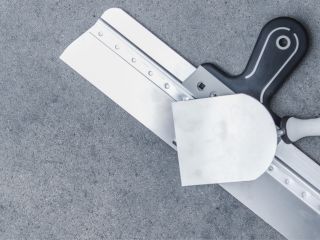
How to Take Care of Drywalls
Drywall removal may not break the bank, but why go through the hassle when you can prevent problems before they start? Drywalls are often removed due to mold contamination, but mold isn't their only enemy. If you're someone who frequently redecorates, you might find unsightly nail holes behind your pictures or discover corners of your ceiling that aren’t perfectly flat. These issues can compromise both the look and integrity of your walls.
Small Drywall Repair Secrets
Some drywall problems can be prevented, while others require fixing. Proper installation is crucial to ensure you won’t encounter uneven spots, often caused by wall studs drying out. Although unpredictable events like broken water pipes can damage your drywall, regular plumbing inspections can help mitigate these risks. Even though it's difficult to predict such issues, taking preventative steps can make a difference.
Essential Drywall Maintenance Tips
When it comes to drywall care, focus on what you can control. Your primary goal should be to avoid major issues:
- Check Behind Furniture: Move furniture away from your drywall occasionally to check for dampness or mold. Early detection is key to preventing extensive damage.
- Mold Treatment: If you spot mold, treat the area immediately. Baking soda is a safe and effective cleaning solution that won’t harm your respiratory system. Ensure the area is thoroughly dried before applying textured paint to cover any stains.
- Coating for Easy Cleaning: Applying a coat of paint makes drywalls easier to clean and adds a layer of protection against moisture and stains.
Nail Holes and Repairs
Avoid making too many nail holes in your drywall. Plan your decor carefully and, if you do create holes, ensure they’re properly patched. Small holes can be filled with spackling, while larger ones may require patching and sanding. For significant damage, such as mold on unpainted drywall, it’s often necessary to cut out and replace the affected section. When replacing drywall:
- Install New Section: Ensure the new piece fits snugly and is properly installed.
- Seal Perimeter Joints: Cover joints with compound to seal cracks and ensure a seamless finish.
- Sand and Paint: Sand the area once dried and apply a matching texture coating for a flawless look.
Additional Tips for Drywall Longevity
- Inspect Regularly: Perform routine checks for signs of wear, especially in moisture-prone areas like bathrooms and basements.
- Upgrade to Mold-Resistant Drywall: Consider using mold-resistant drywall in areas susceptible to dampness to prevent future issues.
- Control Humidity: Use dehumidifiers in humid climates to maintain optimal moisture levels and protect your drywall.
In Conclusion
Keeping your drywall in excellent condition doesn’t have to be a daunting task. By following these tips, you can avoid costly repairs and maintain the beauty of your home. If you encounter significant drywall issues or need professional assistance, don't hesitate to contact us for expert drywall repair services. We’re here to help you keep your home safe, stylish, and problem-free.

